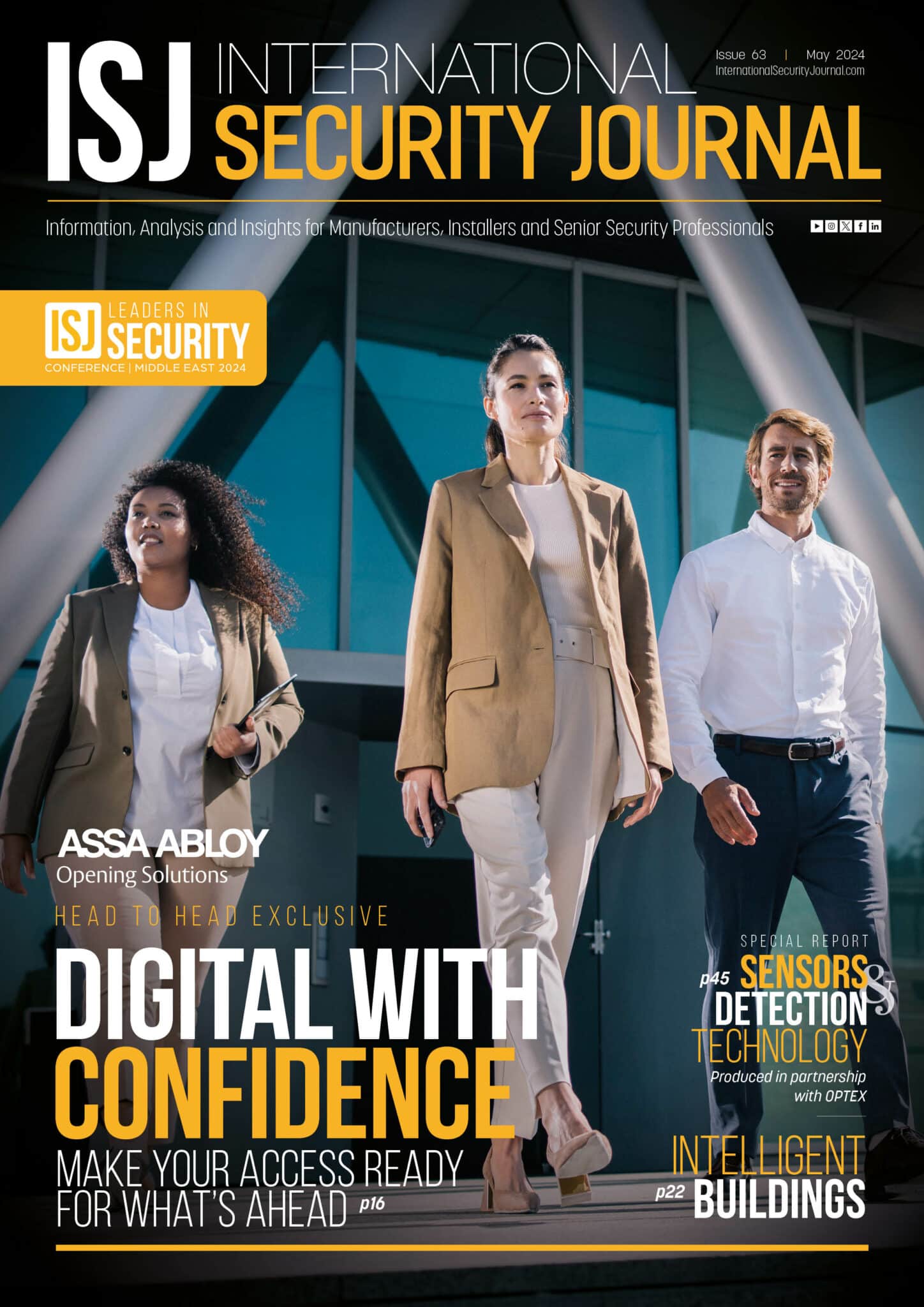ISJ Exclusive: The exciting (near) future of mobile credentials


James Thorpe
Share this content
Carl Fenger and Goran Stevanovic of LEGIC Identsystems investigate what happens when your smartphone knows what you want.
Although mobile credentials as a concept is not well known, people use them on almost a daily basis. When opening your office door using your smartphone or entering a concert venue using a mobile e-ticket, you are presenting information relevant to you that is stored on your mobile device to gain access to areas that you are authorised to enter.
The infrastructure grants you rights based on digital information, or mobile credentials, stored on your mobile device such as smartphone or tablet.
Mobile credentials enable mobile devices to become a form of ‘digital twin’ that can store and selectively share data such as your identity, authorisations, preferences, credit card numbers, clothing size, shopping and location history etc. with any type of infrastructure, be it doors, public transportation, vehicles, shops, vending machines, parking garages, hotels and even your own living room. Mobile credentials are typically encrypted and can be as simple or content rich as an application requires.
When combined with metadata such as your location, time of day, weather, vicinity of friends and family, your personal calendar, applications that share mobile credentials with infrastructure make a great leap towards making your surrounding world more friendly, informative, customised and convenient.
Enabling powerful new apps
Three technologies are currently converging to enable a variety of service possibilities that will soon be commonplace.
By leveraging mobile credentials with Ultra-Wideband (UWB) indoor positioning (a rapidly growing short-range radio technology that can identify your precise location even inside buildings) and Bluetooth advertising (the ability for any device within Bluetooth range to broadcast their availability, even while “asleep”), the connection between who you are, where you are, and what’s available around you is made. This can be illustrated in a variety of use cases:
Access control and indoor navigation
Guiding people as well as machines to their destination indoors as well as outside is the next evolutionary step for access control. Add in the growing demand for touchless entry due to COVID-19, the scenario already made famous by Star Trek over 50 years ago, is finally becoming reality: Doors that automatically open when authorised persons approach.
Due to the ability of UWB to recognise exactly where you are (in front of a door and not behind it) as well as in what direction you are moving and how fast, electronic doors can intelligently open and close as you freely walk through an office building, airport or campus.
Your mobile credentials make sure that only the right doors open and each door’s Bluetooth advertising inform your smartphone app of its identity and presence.
Add into the mix the ability to support outdoor (via GPS/GNSS) and indoor navigation (via UWB) and visitors as well as robots can be precisely guided to their destinations, whether it be to a desired exhibit in a museum, hotel room or an industrial robot delivering a palette within a warehouse.
Shared mobility
With the popularity of shared vehicles and mobility services, the inconvenient step of registering in-person or repeatedly entering credit card details is bypassed with mobile credentials.
By simply approaching your selected mode of private transportation (with guidance provided by UWB navigation), your desired vehicle activates via Bluetooth wake-up, unlocks and even adjusts to your personal preferences such as seat position, climate control, destinations, preferred restaurants and POIs.
The same credentials can be wirelessly shared with parking facilities and fuelling/charging stations to provide a seamless driving experience where you never need to pull out keys, your wallet or purse.
Industrial IoT
In countless Industrial IoT (IIoT) deployments such as building management and logistics supply chains, millions of interactions take place per day between machines, infrastructure, containers, etc. and employees, contractors and partners.
Ensuring that only authorised persons are interacting with industrial assets, and at the right time and place, requires the automated recognition of a person’s (or robot’s) mobile credentials. Only then can interactions be allowed to take place including logging of when and where it occurred.
An example is the shipping of pharmaceuticals which require a tightly controlled environment. Supply chains consist of multiple transport links provided by different parties from factory to warehouse to truck/train to container ship, and the reverse process, before reaching their destination.
The handling of goods and exposure to ambient temperatures, humidity, vibration, shock and more takes place at multiple points along the way. By implementing an IIoT system that not only monitors environmental conditions and the location of shipments, but also requires mobile credentialing of personnel before containers will open and close, end-to-end accountability can be established to ensure that proper handling has been enforced throughout the delivery chain.
Should an error be encountered, for instance, a shipment of medicines that was exposed to too high temperatures, the exact point of failure including when, how long and the responsible party can be instantly identified for auditing and insurance purposes.
On-the-fly access to services
Mobile credentials are commonly used for public transportation passes. Typically purchased on an annual basis, credentials can be shared with partners, for example, to provide bundled complementary services such as discounts for rental car, hotels and ski-passes.
Many services are required on-the-fly and on-demand and maybe even only one time. An example is an office visitor who needs a single-day access to your company printers, employee restaurant and coffee machines. In this case, the simplest kind of mobile credential can be provisioned to the visitor’s phone via QR code or email deep link: A random token that is recognised by the back-end credentialing system as a valid one-day pass to use services in your office.
Smart self-service retail
Unmanned convenience stores are growing at a rapid pace worldwide to meet consumer demand for fast check-out, while reducing costs for retailers. This shopping trend leverages mobile credentials, a smartphone equivalent to current customer loyalty cards, with mobile wallets.
“Just walk out” stores such as Amazon Go implement AI with computer vision, sensors and RFID to detect items taken from the shelf. As there is no staff present, UWB navigation can further enhance the experience with indoor navigation to guide consumers to desired products and Bluetooth wake-up can advertise specials or new products as shoppers come within range.
This technology also facilitates “shop-in-shop” scenarios where mobile credentials are shared with temporary third party retailers who can also benefit from Bluetooth advertising and indoor navigation to announce their presence and guide shoppers to their area.
An end-to-end mobile credentialing platform
To enable all these scenarios, an end-to-end security platform is needed that facilitates creating, storing, modifying, distributing and protecting mobile credentials both in-transit and at rest, as they are distributed over the internet or broadcast via Bluetooth.
As theft of mobile credentials is a show-stopper for any possible business model, end-to-end encryption of credential data plus protection of encryption keys is a foremost requirement.
A key component for supporting mobile credentialing – LEGIC Security Modules
Especially for valuable infrastructure that is broadcasting its presence – be it electronic doors, mobility vehicle or shipping container – encryption keys must be stored in a Bluetooth reader device containing a secure element that is physically and electronically inaccessible.
This is accomplished via LEGIC 6000 series Security Modules which also enable devices and infrastructure to advertise their presence via Bluetooth, even while in a sleep-mode – important for battery powered devices. Security Modules are an integral part of LEGIC’s end-to-end Security Platform which includes Trusted Services and Mobile SDK.
For more details about LEGIC’s end-to-end Security Platform for mobile credentialing, visit: www.legic.com/connect
This article was originally published in the July edition of International Security Journal. To read your FREE digital copy, click here.



